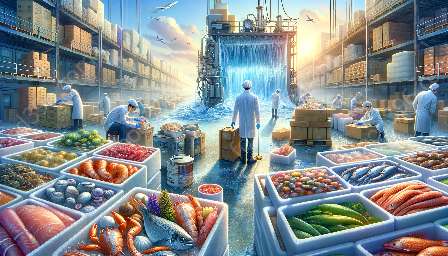Seafood packaging and storage are critical aspects of the seafood industry. It involves maintaining the quality and safety of seafood products from production to consumption. In this guide, we will explore the microbial spoilage of packaged seafood and its interrelationship with seafood packaging, storage, and science.
The Impact of Microbial Spoilage on Packaged Seafood
Microbial spoilage is a significant concern in the seafood industry, as it can deteriorate the sensory attributes, nutritional value, and safety of packaged seafood products. The presence of microorganisms, such as bacteria, yeast, and mold, can lead to off-flavors, off-odors, discoloration, texture changes, and the production of harmful substances, jeopardizing the quality and shelf life of seafood products.
Understanding Seafood Packaging and Storage
Seafood packaging and storage play pivotal roles in preserving the freshness and preventing microbial spoilage of seafood products. Different packaging technologies, such as modified atmosphere packaging (MAP), vacuum packaging, and active packaging, are employed to inhibit the growth of spoilage microorganisms and extend the shelf life of seafood. Additionally, proper storage conditions, including temperature control, humidity levels, and protection from light, are essential to maintain the quality and safety of packaged seafood.
Exploring Seafood Science in Relation to Microbial Spoilage
Seafood science encompasses a broad range of disciplines, including food microbiology, food chemistry, and food safety. When it comes to microbial spoilage, understanding the microbial ecology of seafood, the interactions between microorganisms and seafood matrices, and the factors influencing microbial growth and survival is crucial. Furthermore, the application of advanced analytical techniques enables the detection and quantification of spoilage microorganisms, contributing to the development of effective control measures.
Prevention and Control Strategies
To combat microbial spoilage, the seafood industry implements various preventive and control strategies. These include the use of antimicrobial packaging materials, maintaining proper sanitation practices, implementing hurdle technology to create multiple barriers against microbial growth, and conducting regular quality assessments to monitor the microbial load in packaged seafood. Additionally, promoting consumer education on proper handling, storage, and consumption of seafood products is essential to minimize the risk of spoilage.
Ensuring the Safety of Packaged Seafood
Ultimately, ensuring the safety of packaged seafood involves a multidisciplinary approach that integrates seafood packaging, storage, and science. By implementing stringent quality control measures, adhering to regulatory standards, and continuously advancing research and innovation in seafood technology, the industry can safeguard the welfare of consumers and uphold the integrity of packaged seafood products.

